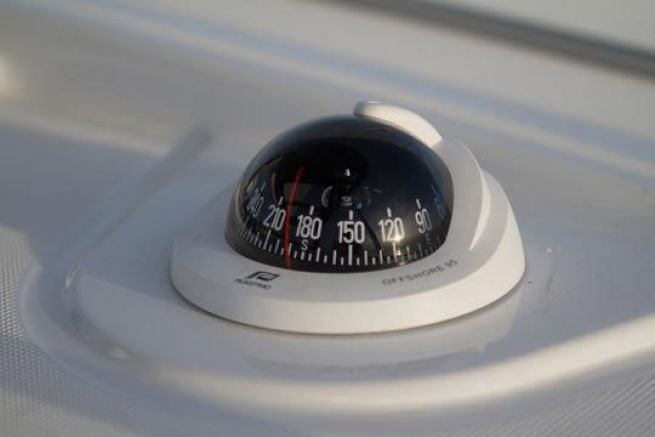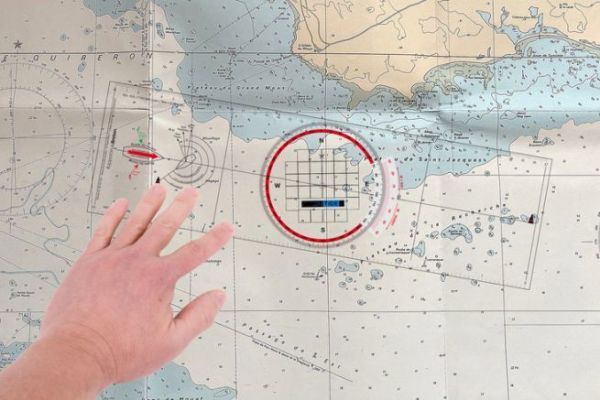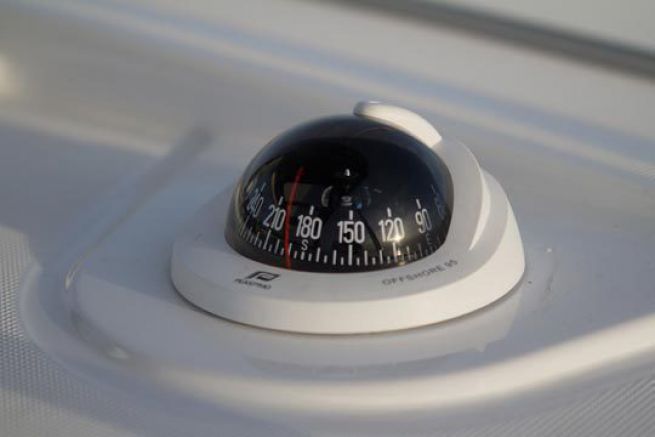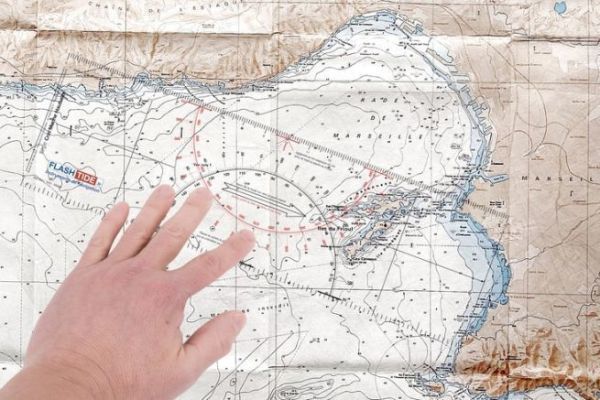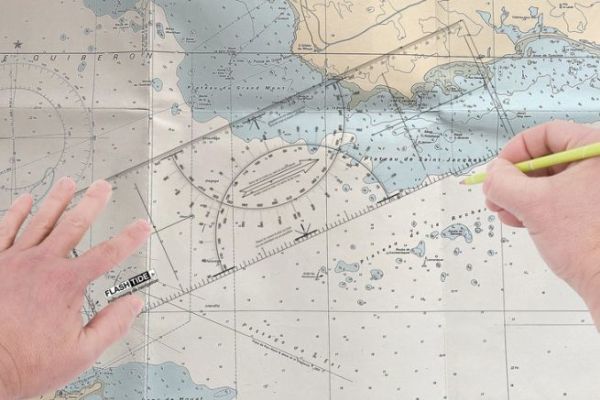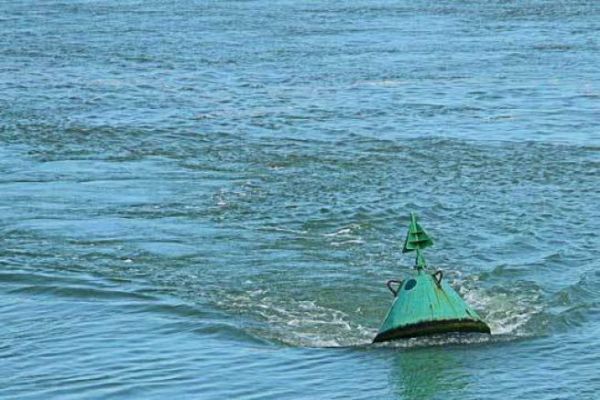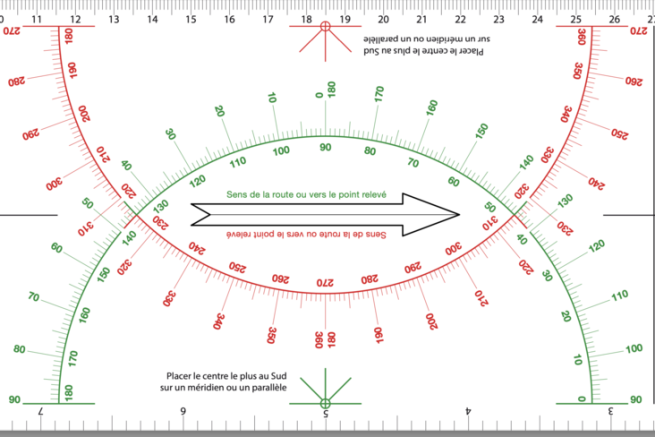To plot a bearing on a map The course to be taken by the helmsman must be taken into account.
To switch from compass bearing (the one taken at the bearing compass) to true bearing (the one read or plotted on the map), add the variation. Variation that can be positive (East) or negative (West).
Variation is the sum of deviation and declination.
BYPASS
The deviation is given from a deviation curve that should be on board all vessels. In practice, this data is neglected.
DECLINE
The magnetic declination is shown on each chart. It depends on the area you are in. It is explained by the difference between the geographic North and the position of the magnetic North. This position is gradually changing over time. Magnetic North moves continuously relative to geographic North. The angle formed between our position and these two directions forms the declination.
This declination is rather weak at the moment in France (around 1°). On the other hand, it is very close to 15° West in Martinique! Not taking this into account in its route calculations largely distorts the course.
To know the declination, one refers to the local map on which it is indicated accompanied by the annual variation.
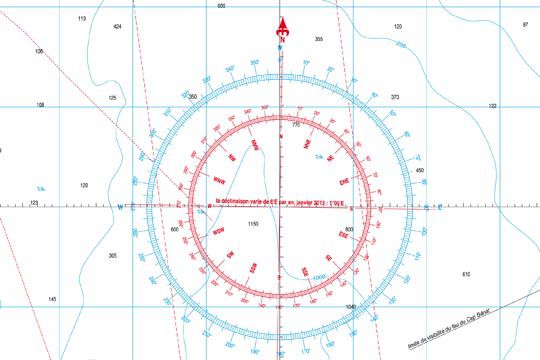
In our example extracted from the Navicarte map of Hyères harbour, it is indicated :
The variation varies from 6'E per year, January 2013 1°05' E
Thus we can calculate that in January 2015, the magnetic declination is 1°17'E
How do I know whether to add or subtract the declination?
By convention, the compass degrees turn clockwise. It is used for declination (as for deviation).
An E declination (to the right) is favourable .
A declination W (to the left) is negative .
Finally, a small mnemonic to remember the meaning of declination:"Is it (EST) more, or is it (WEST) less?
